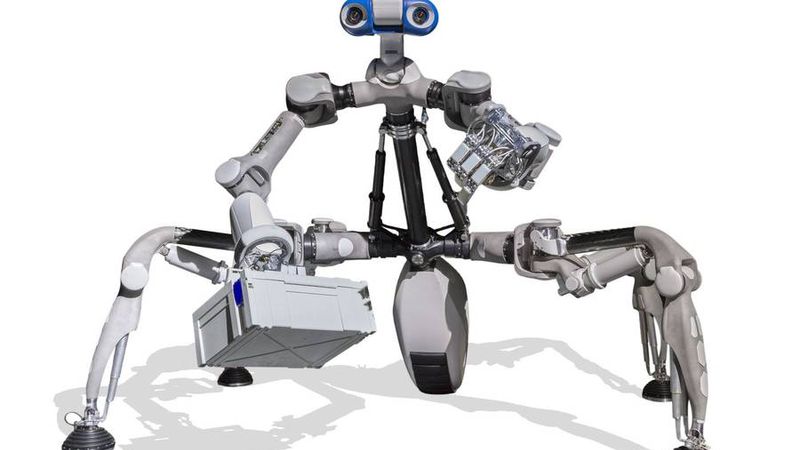The Praying Mantis As A Model - Six-Legged Robot To Build Infrastructure On Celestial Bodies
A praying mantis for the moon, Mars and meteorites: the mantis-like robot "Mantis" is said to be able to independently explore planets and build an infrastructure with its claws.

Inspired by the mantis: Robot "Mantis" will not only be able to walk with its front legs, but also to manipulate.
A praying mantis for the moon, Mars and meteorites: the mantis-like robot "Mantis" is said to be able to independently explore planets and build an infrastructure with its claws. The hardware and software are developed by scientists from the Robotics Innovation Center at the German Research Center for Artificial Intelligence (DFKI) and the University of Bremen.
Thanks to his bio-inspired body and various running patterns, he will master steep craters and boulder fields as well as manipulate with his front legs. By learning from his experiences, he should be able to act purposefully. The LIMES project that has just started is being funded with around 3.7 million euros by the German Aerospace Center (DLR). The term is four years. LIMES stands for “Learning Intelligent Motions for Kinematically Complex Legged Robots for Exploration in Space”.
The name of the robot is borrowed from the mantis, which belongs to the mantis order. The robot morphology will be similar to that of the natural model: the system should not only be able to use the two front of its six legs to walk, but also to grab objects. To do this, it lifts its upper body – like the praying mantis.
"The challenge is to learn running patterns for different ground conditions in which all six legs work in unison despite different tasks," explains Prof. Dr. Frank Kirchner, head of the DFKI Robotics Innovation Center and the Robotics working group at the University of Bremen. The many joints, distributed over several legs, enable many different movement patterns. In this way, the robot can adapt its posture to the circumstances – and maneuver safely in unfamiliar terrain.
Robot selects situationally from its "behaviour library"
The aim of the project is to give the robot algorithms for different walking modes. These can be designed for energy-saving or careful movement. Mantis senses stumbling blocks, craters and hills with tactile sensors that he wears in his soles. Using a camera in his head, he creates a 3D image of the environment. The data is transmitted to earth by satellite. The human instructs the robot which destination to head for. "Based on the data, Mantis selects the appropriate walking pattern from its so-called behavior library. It recognizes obstacles and then avoids them of its own accord,” says Sebastian Bartsch, DFKI computer scientist and project manager. After each action, the robot evaluates its decision. “For example, he asks himself: Was my energy use good? If not, he will act differently in a similar situation in the future,” says Bartsch.
The movement patterns are pre-learned in simulations that simulate extraterrestrial conditions: gravitation, lighting conditions, gradients. Real tests follow in the DFKI's space exploration hall, a 288 square meter test site with an artificial crater landscape.
